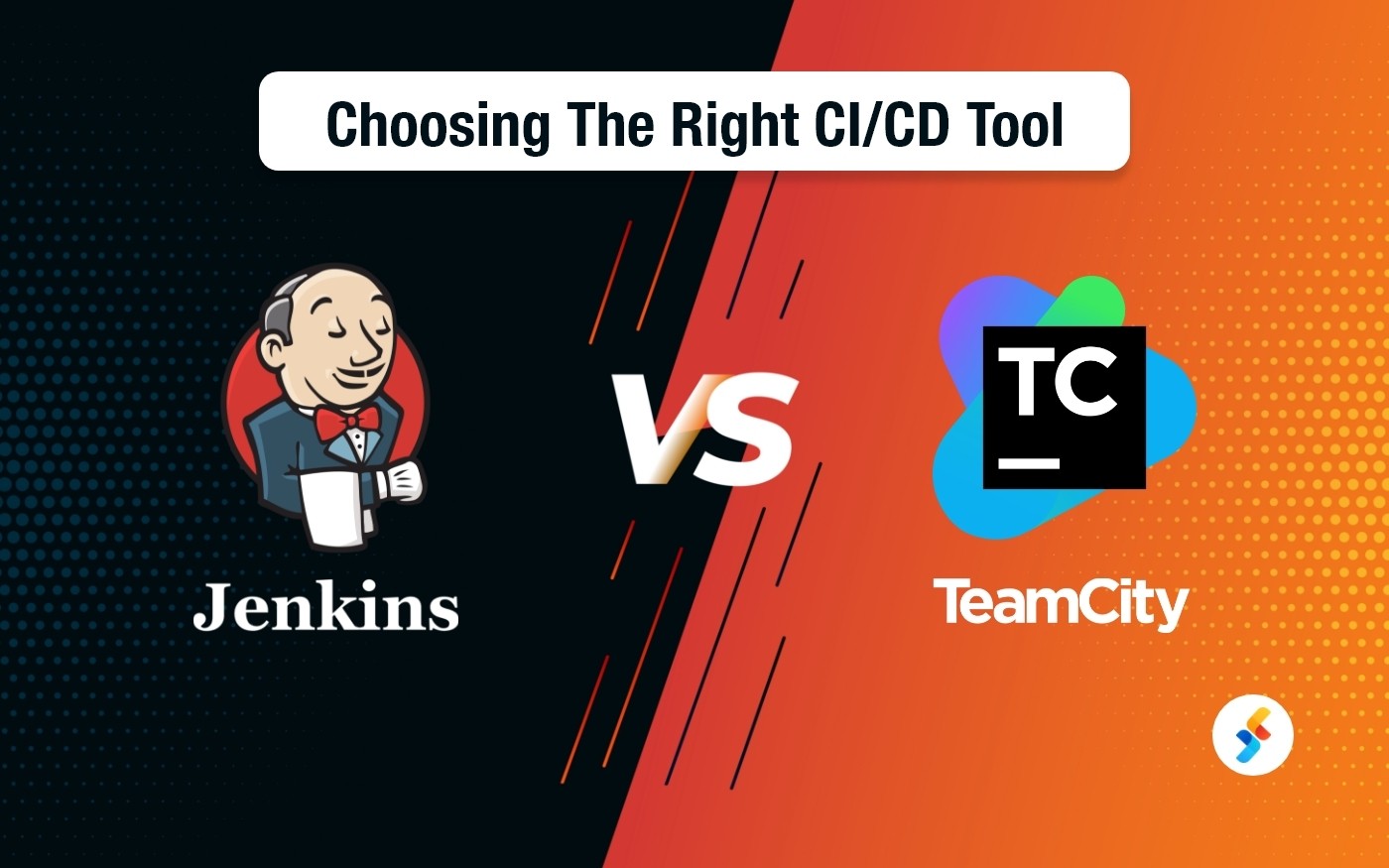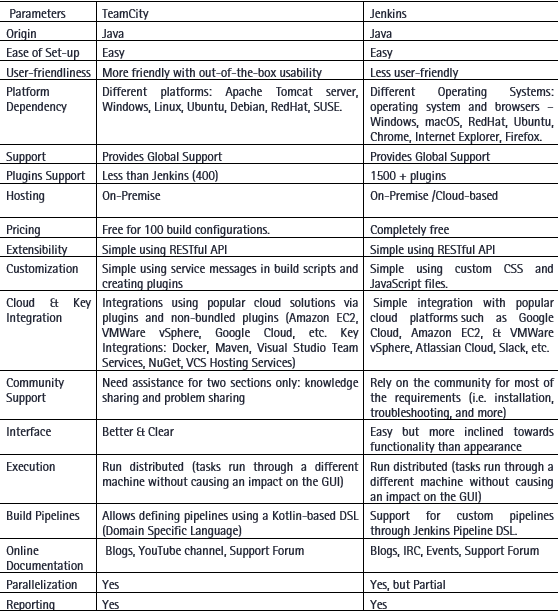
TeamCity comes stacked right out of the box, with excellent build history, source control, and build chain tools.
#Jenkins vs teamcity software#
Still, the open source software comes inherently with lower usability and ease-of-setup. Jenkins' UI is a little more old school, but the new Blue Ocean interface was a major upgrade. Jenkins falls short of both TeamCity and Bamboo in this category. Bamboo is comparable and in its ease of use, but the UI is not quite as pretty, and G2 Crowd ranks TeamCity higher than Bamboo for "Ease of Setup." It also has a gorgeous UI that makes it even easier for CI newbies to get caught up.

It's known for its out-of-the-box usability, particularly its secure default configuration. TeamCity takes the cake for ease of setup and use. The biggest difference for the user is the size of community found around Jenkins versus the other two tools. Bamboo and TeamCity are both commercial tools developed and maintained by their parent businesses. Jenkins is an open source project supported by developers around the world. In short, the reason we are comparing these tools is that they are the best in the biz. All three also offer great support and documentation, but again there are differences in depth and quality. They all offer integrations that extend their capabilities further, though the number of integrations differs between tools. Jenkins, TeamCity, and Bamboo are all excellent tools for continuous integration, automated builds, automated testing, and continuous delivery. By the end of this section, you'll know exactly which CI/CD tool is right for you.īefore we look at what makes these tools different, it's important to point out how they're similar. It's time for these CI/CD tools to rumble! We'll look at the most important attributes of CI/CD, and see how these tools stack up. Ladies and gentlemen, prepare yourself for the main attraction. It has a robust set of features out of the box and a growing plugin ecosystem. It is known for its incredibly simple setup and beautiful user interface.

TeamCity is another commercial CI/CD server, this time from the firm JetBrains. Bamboo also works seamlessly with Atlassian's other tools like Jira (project management) and Hipchat (team communication). Like other CI/CD servers, Bamboo allows developers to automatically build, integrate, and test source code, then prepare the app for deployment. What Is Bamboo?īamboo is a CI/CD server from Atlassian.
#Jenkins vs teamcity code#
According to InfoWorld, these plugins expand Jenkins into five areas: platforms, UI administration, source code management, and build management. Originally created to be a build automation tool for Java applications, it has since evolved into multi-faceted platform with over 1,400 plugins for other software tools. This allows developers to catch bugs quickly and ultimately deploy much faster. Jenkins allows developers to automatically build, integrate, and test code as soon as they commit it to the source repository. Jenkins is the most popular open source CI/CD tool on the market today. If you already use one of these tools and looking to make a change, this article will provide you with the insight needed to make the right decision.īefore we get into the throwdown itself, let's briefly cover the basics of each tool. By the end of this article, you should feel confident selecting a tool for your team. We're going to look at 3 of the top CI/CD tools on the market today: Jenkins, TeamCity, and Bamboo. All that's needed is a set of tools to make it happen. It's a win-win-win for the company, customers, and developers. These techniques help you deploy better software faster, with fewer errors, and a quicker feedback loop. You'll be left in the dust.Ĭontinuous Integration and Continuous Delivery are best practices for software deployment today. Here's where we get back to CI/CD: the old way of deploying software is like a 1924 Olympian trying to compete in the 21st Century. Most of this improvement is the result of better performance techniques and practice regimens.

That's how much better, faster, and stronger athletes are today. If you compare the 1924 records to those from 2016, those Olympians wouldn't even make their national teams. Have you ever looked at the Olympic world records from 1924? I know you're here for a good ol' CI/CD tools throwdown, but hear me out.


 0 kommentar(er)
0 kommentar(er)
